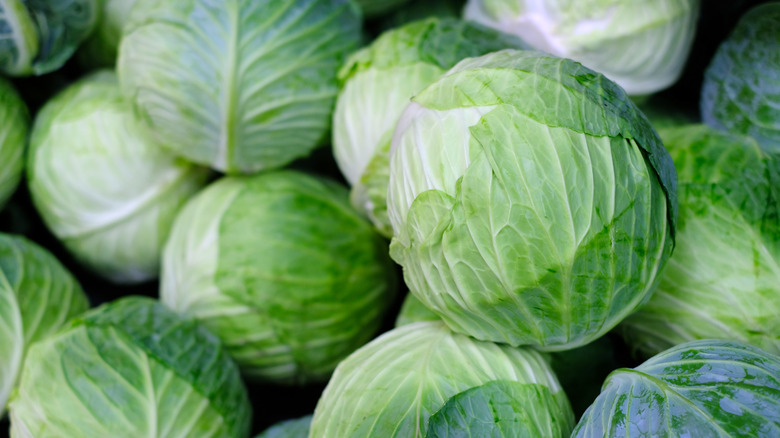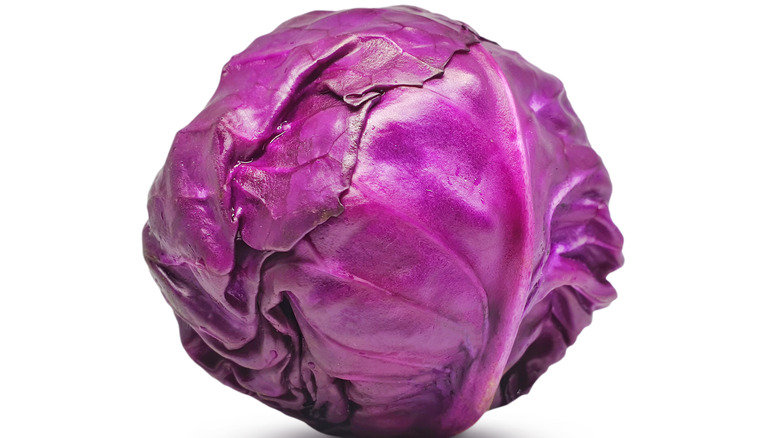What To Look For When You're Buying Cabbage
The great Mark Twain once said, "Cauliflower is nothing but cabbage with a college education." Despite cabbage being looked down on by some, this unassuming vegetable is often part of our diets due to its medical and nutritional assets and its versatility in the kitchen.
The Romans supposedly used it as a hangover cure, and, due to its high content of vitamin C, the Dutch and German sailors would eat it in the form of sauerkraut during their journeys to prevent scurvy (per Allrecipes). According to Allrecipes, cabbages are packed with phytochemicals and essential vitamins along with being a great dietary fiber source. Cabbage grows in heads, like lettuce, and is a highly versatile vegetable that can be enjoyed in many ways — like eating its raw leaves in a salad or coleslaw, or cooking it to make sauerkraut and the ever so popular Korean kimchi. The two most abundant types you will see in grocery stores are the red and purple cabbage, and there are many different varieties, the most popular being Savoy, napa and bok choy.
With these potential uses and benefits, when you are perusing the produce aisle, it is important to know what to look for to ensure the cabbage you select is of top quality.
What should you look for?
When selecting a cabbage in the produce aisle, pick one with crisp leaves and no significant blemishes or bruising. Peak harvest is from November to April which is when you will find the freshest cabbages in the store. Choose heads that are firm and heavy, but don't get the largest ones, says Allrecipes. To select the most firm cabbage, squeeze the head and if it presses in too easily, it is not quite mature enough (via Bonnie Plants). Cookist warns about cabbages whose outer leaves have been pulled off, which sellers might be doing to make old cabbages appear more fresh. If the leaves have discoloration, don't buy it, as it could have worm damage (per WikiHow). It is ideal to keep the cabbage head intact until consumption, so try to avoid buying any cabbage that has been pre-cut or shredded, as this will dilute its freshness, according to Cookist.
Look for the ones with bold color — green cabbages should be almost lime-colored and red needs to be bright maroon or purple, suggests WikiHow. Get to know the various types of cabbage and their nuances in appearance and flavor: Napa (aka "Chinese cabbage") should have a distinctive oblong shape, whereas Savoy has more wrinkled leaves than other varieties (via The Kitchn).
While it may be a joke to some, this simple yet adaptable vegetable can be indispensable to many dishes, which makes buying the right one worth a little thought.

